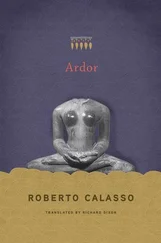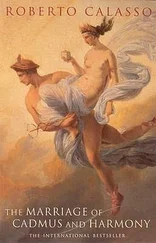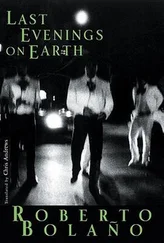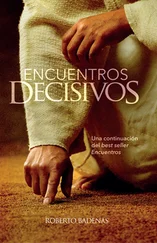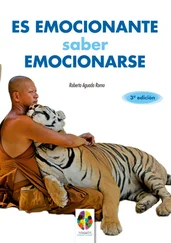Thus it was at the time of the Veda: scores of shabby, worn-out things; a huge clearing, most of it empty; a tension that galvanized the space from end to end, with invisible threads vibrating from one fire to another, one hut to another.
Thus it was long afterward, on the threshold of the kaliyuga , when Yudhiṣṭhira, near the end of the bloody war against his cousins, the story of which is told in the Mahābhārata , chose to celebrate the sacrifice of the horse to expiate his guilt: the elements were the same, in accordance with the ancient canons. But the twenty-one poles to which the victims were tied were all golden now. Around the place of sacrifice a huge city had hurriedly been built, to host the kings who would attend, each with his retinue; to house the animals, some of every species; to offer shelter to the ascetics who had come down from the mountains to be present at the ceremony. “The whole island of the Jambū, with all its many and diverse peoples, assembled together for the king’s sacrifice.” It was the biggest bazaar anyone had ever seen. Never had so much jewelry and so much crockery been gathered together in such a space. “No one there was sad, no one was poor, no one was hungry, no one was unhappy, no one was rude.”
It was easy to miss the moment the sacrifice began. You would see four priests crouching down. One, the adhvaryu , prepared a cake of boiled rice and shared it with the others. A commonplace, everyday thing to do. Yet it was the beginning proper. That white cake was the seed. That seed was desire. For something to begin, desire must take shape like a substance that expands, that radiates outward. That white rice cake — or again the four glittering gold pieces that the sacrificing king handed out to the priests while they ate from their bowl. “Because rice cake is seed and gold is seed.”
The adhvaryu , priest of countless ritual gestures, he who enjoyed such close contact with the sacrifice that he came out scorched at the end, would look the sacrificer-king in the eye and say: “Hold thy voice.” Why? “Because the sacrifice is voice ( vāc ).” That is what was meant. And that was the signal that one was entering into the sacrifice.
In the evening, in the hut of fires, they celebrated the agnihotra; they poured fresh milk, mixed with water, onto the fire. They heated the milk on the fire named gārhapatya , they poured it out on the fire named āhavanīya . Those two fires were the poles of every ritual tension. Everything that happened was a passage from one to the other.
The procession of women arrived from the south. Silent and absorbed, they advanced in four lines. Leading them were the four wives of the sacrificer-king, their thick hair and complicated headdresses studded with silver buttons. The mahiṣī , the first bride, the consecrated; the vāvātā , the favorite; the parivrktā , the neglected; the pālāgalī , of inferior caste. Each was attended by one hundred maidens: a hundred princesses for the mahiṣī; a hundred of noble birth for the vāvātā; a hundred courtiers’ daughters for the parivrktā; a hundred stewards’ daughters for the pālāgalī ,
In the shadow of the hut, a zigzag barrier of women. After pouring out the milk, the sacrificer-king lay down, naked, between the thighs of the favorite, likewise naked. There he would stay, all night, without moving. With the constant contact he would desire her, but without possessing her. He would let tapas grow within him; he knew he would be needing that austere ardor for a long time, a whole year, the duration of the sacrifice. Behind them, in order, the other women were stretched out on the ground.
Why that night, at once erotic and motionless? It was “a form of the state of wakefulness.” Wakefulness was essential. That for the whole first night of the rite the sacrificer-king should stay awake. Friends were with him to keep him from sleeping. But above all: wakefulness meant that constant contact with the body of the favorite.
When the sun rose, and the sun was the horse, they were ready to greet it with twenty-one formulas: the first six had to do with sight (“Homage to he who contemplates attentively”), two with hearing, six with being and nonbeing, then one with sight, one with hearing, and finally five with the mind (“Homage to the brahman ! Homage to tapas ! Homage to the stillness!” were the last). Each homage was a phrase, a musical articulation. Behind every composition lies the sequence of those formulas.
Before the sacrifice of the horse begins, the sacrificer-king entrusts his power to a priest, the adhvaryu . “The adhvaryu is king for the duration of the sacrifice.” But the sacrifice lasts a year. And the year is everything. Thus the king stands aside from his kingly offices for the whole period during which he celebrates the sacrifice that makes him a king. Which, again, is all the time there is. Thanks to the aśvamedha one can acquire sovereignty ; but, if one doesn’t possess sovereignty, one is “swept away” by the sacrifice of the horse. Such is sovereignty’s vicious circle. There is no sovereignty that is not founded on that vicious circle.
At this point the adhvaryu would pass a rope around the horse’s neck. This was the beginning of the sacrificial act. What had come before was training, purification, making oneself fit, preparing oneself, baking the mind. Now came the moment for action pure and simple. It is action that binds. The first act was a rope passed around the horse’s neck, while the adhvaryu said to the animal: “You are he who encircles, you are the world; you are a guide, a protector.” But how could that mere rope go around that which goes around everything, encircles the world? Yet that is what it did.
The most brutal part came soon enough. With a rope around its neck, the horse and a black dog (“with four eyes,” they said: but it was just a black dog with two white patches above its eyes), were pushed toward the pond near the sacrificial clearing. Preceded and followed by relatives of the sacrificer-king, by the son of a prostitute, by a priest. The dog stepped into the water. The horse stepped into the water. When the dog was out of its depth and began to flounder, the adhvaryu said: “Kill”—and the son of the prostitute attacked the animal with a wooden club. Usually it was sidhraka wood, but the important thing was that it be a wood whose name included the syllable ka . Briefly, the dog would try to lift its head above the water again. Again it was clubbed. Then the priest would push its already inert body between the horse’s hooves, saying: “Away with the mortal! Away with the dog!” But why did the banishment of what is mortal have to be so cruel, one wondered, as already the dead dog slid away southward on the surface of the water? A whole year, a cycle of noble deeds and lofty formulas was set in motion by that cowardly act.
The most cowardly act was now followed by the most noble. For a while the rope had been tied around the horse’s neck. Now it was untied. And they let the horse free to wander around at will. But before letting it free, the adhvaryu and the sacrificer-king stood beside the horse and murmured a number of formulas. They told the horse who he was and what they were asking him to do. “Follow the path of the Ādityas”—the path of the sky — was what they chiefly urged. Meanwhile the four hundred armed guardians who would escort the horse wherever it chose to go had already gathered around. They would defend it, even if it meant killing whoever might get in its way; they would watch over it to see that it did not mount a mare or plunge into water. Thus they pressed on for almost a year. The horse must never turn back. As with the sun, had it turned back, “everything would have been destroyed.” The animal’s wanderings, ever free and ever further away from the place of sacrifice, must never stop. Thus “continuity” ( samtati ) was not broken. And, as the horse trod ever new lands and the path it took became an ever longer and more tangled thread, so each day at the place of sacrifice the adhvaryu would repeat the formulas that state the “forms” ( rūpas ) of the horse, while his thoughts, and those of the other priests, remained fixed on the invisible and wandering animal — and what the adhvaryu did then, this incessant repetition of formulas, protected the continuity of that thread that bound them together.
Читать дальше


